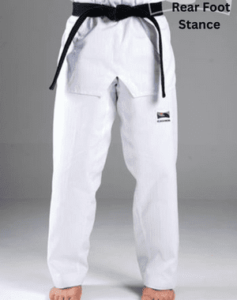“5 Taekwondo Stances Every Martial Artist Should Know”
Taekwondo, a Korean martial art known for its powerful and dynamic kicks, relies heavily on the proper execution of stances to support effective techniques. Here we examine five stances every martial artist from beginner through advanced levels should know and their significance within martial arts.
Taekwondo Stances Are Important
Stances play an integral part in Taekwondo, providing stability, balance, and power that allows practitioners to efficiently execute techniques. Without such support from strong stances, movements could become vulnerable and less impactful – an essential aspect for martial artists worldwide.
Starting Taekwondo
Step One for Beginners The Parallel Stance, also known as Narani Sogi in Korean, is one of the primary Taekwondo stances and provides stability, balance, and power that allows practitioners to execute techniques more efficiently.
A Crucial Aspect of Taekwondo Is Stances
Stances play an invaluable role in Taekwondo by offering stability, balance, and power that enable practitioners to execute techniques efficiently. The Importance of Stances in Taekwondo Stances are crucial in Taekwondo because they provide the practitioners with the stability, balance, and strength they need to execute techniques successfully.
Stances Are an Essential Component In Taekwondo
They play an indispensable part by offering stability, balance, and power necessary for efficient technique execution from practitioners. Stances Are an Essential Part of Taekwondo Stances play an Essential Component In Taekwondo by providing stability, balance, and power necessary for efficient technique execution by practitioners allowing practitioners to efficiently execute techniques.
Front Stance
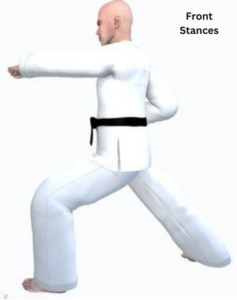
“Ap Sogi,” or front stance, is an effective stance used for both offensive and defensive movements. One foot should move forward while the other remains behind to maintain balance by evenly distributing weight between both front and rear feet.
Taekwondo’s back stance
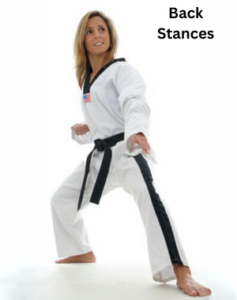
(Dwight Sogi) is an efficient defensive position designed for quick movements and controlling opponents. Your weight should primarily rest on your back leg with only your front knee slightly bent for swift transitions when making sudden attacks or changes of direction.
Horse Riding Stance

“Juchum Sogi,” similar to squatting, provides low support that ensures excellent balance and can be used to execute powerful strikes or blocks.
An L-stance
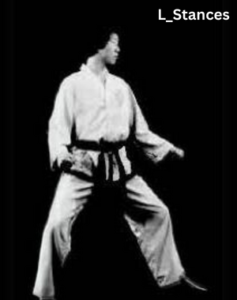
Niunja Sogi is an intermediate stance used to quickly change directions or set up various techniques.
Stances for Taekwondo Intermediate Training
Taekwondo’s advanced Tiger Stance,
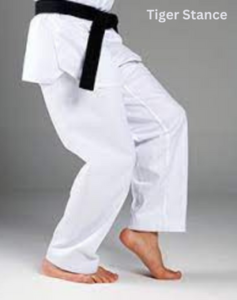
Beom Sogi involves leaning forward while turning one foot outward while keeping your body low to the ground to create powerful and explosive strikes. It is best utilized during sparring competition.
Crane Stance
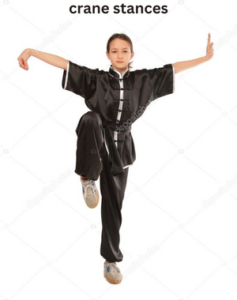
The “Hakdari Sogi,” or crane stance, emulates the posture of a crane by emphasizing balance, agility, and control – essential elements needed for advanced techniques that require precision and grace.
Walking Stance
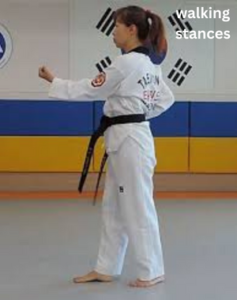
Gunnon Sogi (a dance form of Japanese) provides a dynamic walking stance, permitting forward and backward motion while remaining stable, providing mobility and speed.
Sitting Stance
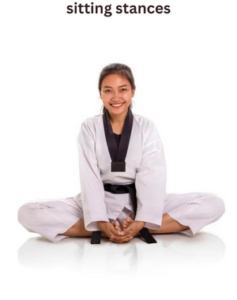
A sitting stance, commonly used in Japanese karate-do as Annun Sogi, is a safe and low stance utilized for performing hand techniques and forms.
Rear Foot Stance
(Dwi Kubi Sogi) emphasizes agility and quick footwork to effectively counter opponents or create angles of attack, giving combatants opportunities to strike back effectively or form counter-aggression patterns.
Taekwondo Stances Are Essential Components of Taekwondo Techniques
Balance and Stability,
Achieving precision with complex movements requires taking steps to maintain balance and stability during intricate movements. By adopting appropriate stances during such movements, keeping their equilibrium is of great significance in executing techniques with accuracy.
Power Generation
Taekwondo techniques rely heavily on harnessing force generated from a secure stance to generate force, channeling energy from the earth through the body to target and eventually into combative techniques. This step marks an essential starting point.
Mobility and Speed
Stances provide the foundation for quick and agile footwork that enables martial artists to quickly maneuver while dodging attacks, opening opportunities for counterattacks or simply sidestepping them altogether.
Defensive Capabilities
Maintaining a secure stance protects and minimizes vulnerabilities. Enabling martial artists to deflect incoming strikes effectively and block or deflect them effectively.
Offensive Applications;
Stances are at the core of effective offensive techniques, providing kicks and strikes with maximum impact.
Stance Training for Taekwondo
Consistent Taekwondo practice is essential to mastery. Pay special attention to correct posture, weight distribution and transitions between stances – drills and forms can further assist with honing these abilities.
Common Mistakes to Avoid
Improper weight distribution. Lack of balance, and improper foot alignment are three frequent errors in Taekwondo stances that need to be carefully addressed for safe techniques without incurring injuries. Taekwondo practitioners must dedicate additional training sessions specifically aimed at this aspect for correct technique execution as well as to minimize injuries.
Conclusion
Taekwondo places great emphasis on mastering its stances to become a proficient martial artist. Stances serve as the cornerstone of Taekwondo technique. Power, and control – regardless of your level of experience with Taekwondo training. Spending some training time honing your stances will increase your abilities beyond expectations.
FAQs
- Beginners looking to start Taekwondo?
First familiarise themselves with four fundamental Taekwondo stances – parallel. Front and back stances as well as horse riding stance and L-stance.
- What Taekwondo Stance Provides the Ideal Balance and Stability?
The horse riding stance offers unparalleled balance and stability due to its low, squatting position.
- What is the purpose of advanced stances such as Tiger and Crane Stances?
Advanced stances like Tiger and Crane Stances emphasize power, agility, and precision for advanced techniques.
- Are My Taekwondo Stances Better?
To excel as a Taekwondo martial artist, practice, focus, and guidance from an instructor are key components.
- Why is Proper Stance So Vital to Taekwondo?
A strong stance serves as the cornerstone for successful techniques. Offering balance, stability, and power in both defensive and offensive maneuvers.

